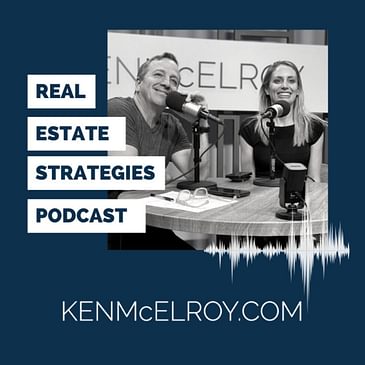Ken McElroy is joined by Charlie Koznick, Chief Investment Officer of MC Companies. They talk about MC Companies' long term plan of investing in over $500 Million of real estate.
• • •
Visit Ken's Bookstore: https://kenmcelroy.com/books
• • •
ABOUT KEN: Ken is the author of the bestselling books The ABC’s of Real Estate Investing, The Advanced Guide to Real Estate Investing, and The ABC’s of Property Management. With over two decades of experience in real estate investing, Ken McElroy is passionate about sharing the good life by helping real estate investors grow and prosper. This podcast is a place for Ken to discuss numerous topics connected to real estate investing, including finance, budgeting, the entrepreneur mindset, and creating passive income. Ken offers a wealth of personal experiences, practical advice, success stories, and even some informative setbacks, all presented here to educate and inspire. Whether you’re a new or seasoned investor, the information and resources on this channel will set you on a path where you and your investments can thrive.
Ken's company: https://mccompanies.com
• • •
DISCLAIMERS: Any information or advice available on this podcast is intended for educational and general guidance only. Ken McElroy and KenMcElroy.com, LLC shall not be liable for any direct, incidental, consequential, indirect, or punitive damages arising out of access to or use of any of the content available on this podcast. Consult a financial advisor or other wealth management professional before you make investments of any kind.
Although Ken McElroy and his affiliates take all reasonable care to ensure that the contents of this podcast are accurate and up-to-date, all information contained on it is provided ‘as is.’ Ken McElroy makes no warranties or representations of any kind concerning the accuracy or suitability of the information contained on this podcast. Any links to other websites are provided only as a convenience and KenMcElroy.com, LLC encourages you to read the privacy statements of any third-party websites. All comments will be reviewed by the KenMcElroy.com staff and may be deleted if deemed inappropriate.
Comments that are off-topic, offensive, or promotional will not be posted. The comments/posts are from members of the public and do not necessarily reflect the views of Ken McElroy and his affiliates.
© 2024 KenMcElroy.com, LLC. All Rights Reserved.

